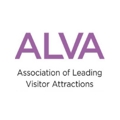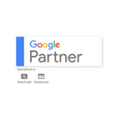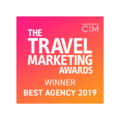How to improve your attraction’s web experience in four steps

This is a guest blog from Kelly Molson, the Co-Founder of Rubber Cheese - a web design agency that specialises in creating excellent web experiences for Visitor Attractions. Kelly also runs ‘Skip the Queue’, a podcast featuring inspiring industry experts who share their knowledge of what really makes an attraction successful (including Digital Visitor’s MD Simon Jones).
In this blog, Kelly runs through some key tips on how to make your website faster and more user-friendly, and why these factors are so important in stopping visitors from leaving your website.
What is user experience?
“User experience (UX) refers to a person’s emotions and attitudes about using a particular product, system or service. Additionally, it includes a person’s perceptions of system aspects such as utility, ease of use and efficiency.”
Wikipedia
Confused? This might help – if we were assessing the UX for your website, we would ask questions like:
Can users do what they need to easily?
Users tend to abandon a website if they are unable to complete their task within 3 clicks.
Can users complete tasks quickly?
55% of visitors spend less than 15 seconds on your website and every second matters when it comes to conversions.
How does your website make visitors feel?
The experience a guest has will have a lasting impact, and UX helps you consider this.
By adopting the following methods, you’re sure to improve the experience guests have on your website.
1. Streamline the booking journey
Imagine this...You’ve made your mind up to visit an attraction – the place looks fantastic! You’ve browsed their social media photos and read positive online reviews. The VIP experiences are particularly tempting.
Full of enthusiasm, you visit the website to buy tickets, but you can’t.
Well, maybe you can. You’re not really sure because the process is so confusing. After 5 minutes of pointless clicking, you’re annoyed. A few minutes later, the excitement has vanished entirely, and you leave the website. The tickets remain unpurchased.
To avoid this, you must streamline the booking journey by implementing the below methods.
Remove distractions
Once a user is past the basket page, they're ready to purchase - remove any items that distract them from making the payment. This means streamlining the main navigation by removing any navigational links.
Label buttons clearly
This ensures users know what to expect when they click. For example, instead of saying “continue”, say “continue to payment”. This gives people more confidence during the journey.
Include a progress bar
Let users know exactly how many steps they need to take to purchase their tickets and what stage they’re currently at.
Include a basket overview
Make sure there’s either a review order page or a basket overview on each page of checkout. Users need to feel confident they’ve made the correct selection before they proceed with their payment.
Need help?
Add a “need help?” area on each page of the checkout with a phone number. If someone experiences problems, they can easily call you to book or ask questions.
Clear next steps
Once the payment is confirmed, be really clear about what the guest needs to do next.
Allow them to download their tickets immediately in PDF format and send an email with the same downloads. If a user has bought their tickets on mobile, it might be hard for them to print, so give them the option to save their tickets to Apple Wallet or Google Pay. Additionally, let them save the date of arrival to their calendar as a reminder.
2. Speed up your site
Did you know a 1-second delay in a page’s load time results in:
- 11% fewer page views
- 16% decline in customer satisfaction
- 7% decrease in conversions
Your website’s speed matters – and it matters to your users. If they can’t locate information or book tickets quickly, they’ll look elsewhere for their magical day out.
How can you make your website faster?
Optimise images
Large and unnecessary images have a considerable part to play in slowing down your website, so make sure every photo serves a purpose and is optimised for the web.
To do this, use Kraken Image Optimizer, TinyPNG and JPEG Optimizer.
Be mindful of what format your images are uploaded in.
| File type | Description | Best used for |
| .png | Larger and retain the quality of complex images | Logos with transparent backgrounds |
| .svg | Tiny in size and vectors, which means they're infinitely scalable. | Logos and icons where you don't want to lose quality |
| .gif | Support transparent backgrounds and can be animated | Flat graphics that don't have many colours |
| .jpeg | Optimised to reduce the file size and typically smaller than a .png of the same photograph. | Photographs or images with gradients |
Use a CDN (Content Delivery Network)
One of the best ways to improve your website’s speed is to use a CDN (content delivery network).
A CDN is a global network of servers that duplicates and stores your website content – it then delivers this content to users from the servers closest to their physical location.
For example, if your website is hosted on a UK server, visitors from Australia would have to wait a frustratingly long time for your website content to download. But with a CDN, they receive information much faster because it’s sent from a local server.
Popular CDN’s include MaxCDN, CloudFlare, Amazon CloudFront and Sucuri.
Enable Caching
Caching is the industry term for storing files (such as HTML documents or images) in a temporary storage area. It makes websites faster because it means a page’s content is readily available and doesn’t have to be retrieved from its source each time someone visits.
There are plenty of caching plugins available on WordPress – the most popular being W3 Total Cache and WP Super Cache.
If your website isn’t on WordPress, caching gets trickier – the best course of action is to discuss alternatives with your hosting provider.
3. Use chatbots
63% of people would consider messaging an online chatbot to obtain “quick emergency answers”, and an incredible 37% of people said they would make a purchase through a chatbot.
If done well, this speedy way of communicating with your guests improves consumer trust and brand loyalty.
There are tons of off-the-shelf chatbots available, including ChatBot, a platform that doesn’t require coding experience. It lets you create a variety of bots that can answer customer questions, gather feedback or streamline the buying process.
4. Make it easy for people to buy
The purpose of your website is to get people to book their visit online. To achieve this, make the process as easy as possible and have a distinct booking button.
Highlight the button in a colour that’s complementary to your brand but stands out from the rest of the navigational buttons, use a clearly defined contrast and add a labelled icon next to the button which screams BUY TICKETS.
The best place to add this button is in the top right of the page – this is where users expect it to be.
Most importantly, don’t forget the mobile experience! Instead of hiding the button within the burger menu, give it a standalone icon.
Conclusion
If you arm yourself with these UX tools and centre your guests in your website design and development, you’ll be amazed at how quickly visitors start coming. These, sometimes tiny tweaks, have an incredible impact on your attraction’s success.
You’re increasing the probability of users completing desired tasks such as purchasing tickets online, signing up for your newsletter and reading your latest news.
Plus, by solving your guests’ problems quickly, you’re also cementing your reputation as a brilliant place to visit, both physically and online. And you know what that means – more word of mouth referrals and stellar online reviews.
This article was taken from Rubber Cheese’s free ebook – The Ultimate Guide to Doubling Your Visitor Numbers.
Kelly Molson is the Co-Founder and Managing Director of Rubber Cheese. She’s a champion of women in digital and is passionate about increasing the number of women agency owners in the UK. She founded Mob Happy, which is a series of not-for-profit events for women agency owners and runs intimate mastermind groups that support existing founders and inspire future leaders.










